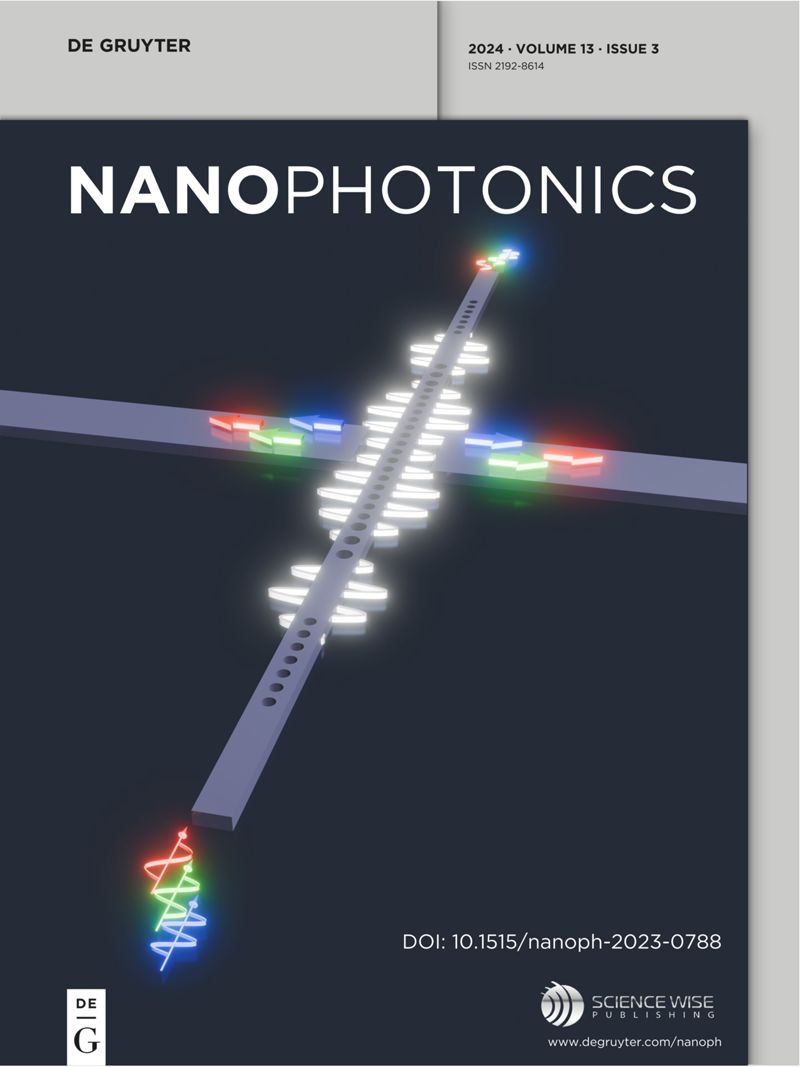超富硅氮化布拉格光栅调制不稳定性、Fermi-Pasta-Ulam递归和图样形成的理论研究
IF 6.5
2区 物理与天体物理
Q1 MATERIALS SCIENCE, MULTIDISCIPLINARY
引用次数: 0
摘要
超富硅氮化布拉格光栅为光子芯片的精确光操纵提供了一个强大的平台。其异常高的非线性和强光栅诱导色散附近的阻带边缘显著降低功率和长度所需的芯片级光-物质相互作用。利用计算方法,我们从理论上研究了该平台在Akhmediev呼吸框架内的调制不稳定性、Fermi-Pasta-Ulam递归和模式形成。我们评估了它们的实验可行性,并表明该平台可以在输出端产生高质量的脉冲串。我们证明调制不稳定性可以在短至1-2毫米的光栅中触发,导致阿赫迈耶夫呼吸形成。通过分析整个色散曲线,我们确定了产生新频率的泵浦波长,并表明光栅也可以产生梳状离散光谱。此外,我们发现即使具有高损耗,光栅输出的参数放大也是可能的,突出了其作为频率梳生成、波长复用数据传输和高精度脉冲处理的非线性平台的潜力。本文章由计算机程序翻译,如有差异,请以英文原文为准。
Theoretical studies of modulation instability, Fermi–Pasta–Ulam recurrence and pattern formation in an ultra-silicon-rich-nitride Bragg grating
Ultra-silicon-rich nitride Bragg gratings provide a powerful platform for precise light manipulation in photonic chips. Their exceptionally high nonlinearity and strong grating-induced dispersion near the stop-band edges significantly reduce the power and length required for chip-scale light–matter interactions. Using computational methods, we theoretically investigate modulational instability, Fermi–Pasta–Ulam recurrence, and pattern formation in this platform within the framework of the Akhmediev breather. We assess their experimental feasibility and show that this platform can generate a high-quality pulse train at the output. We demonstrate that modulational instability can be triggered in the gratings as short as 1–2 mm, leading to Akhmediev breather formation. By analyzing the full dispersion profile, we identify pump wavelengths that generate new frequencies and show that the grating also can produce a comb-like discrete spectrum. Furthermore, we reveal that even with high loss, parametric amplification at the grating output is possible, highlighting its potential as a nonlinear platform for frequency comb generation, wavelength-multiplexed data transmission, and high-precision pulse processing.
求助全文
通过发布文献求助,成功后即可免费获取论文全文。
去求助
来源期刊

Nanophotonics
NANOSCIENCE & NANOTECHNOLOGY-MATERIALS SCIENCE, MULTIDISCIPLINARY
CiteScore
13.50
自引率
6.70%
发文量
358
审稿时长
7 weeks
期刊介绍:
Nanophotonics, published in collaboration with Sciencewise, is a prestigious journal that showcases recent international research results, notable advancements in the field, and innovative applications. It is regarded as one of the leading publications in the realm of nanophotonics and encompasses a range of article types including research articles, selectively invited reviews, letters, and perspectives.
The journal specifically delves into the study of photon interaction with nano-structures, such as carbon nano-tubes, nano metal particles, nano crystals, semiconductor nano dots, photonic crystals, tissue, and DNA. It offers comprehensive coverage of the most up-to-date discoveries, making it an essential resource for physicists, engineers, and material scientists.
 求助内容:
求助内容: 应助结果提醒方式:
应助结果提醒方式:


